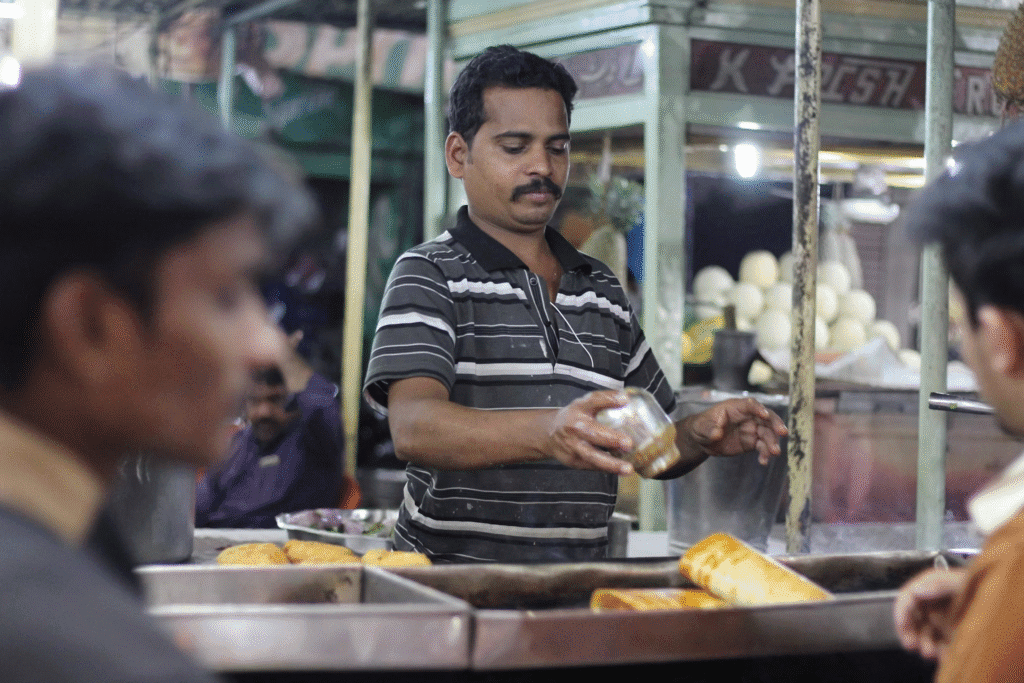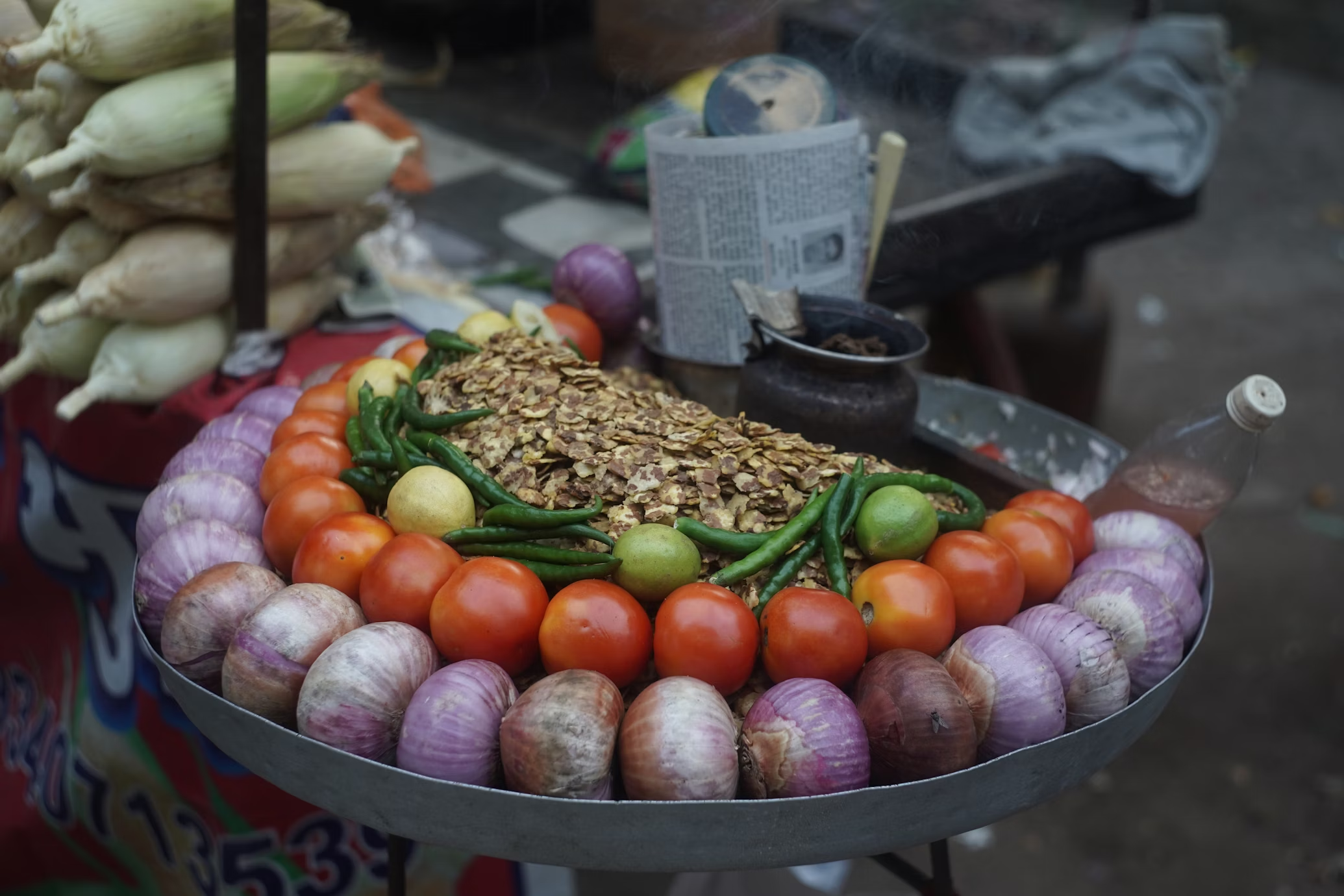How to Start a Food Business from Home
How to Start a food business from home in India has gained traction as a way to enter the world of entrepreneurship. A home-based food business provides a practical start in the food industry requiring less initial investment than a traditional restaurant and allowing you to set your own work hours. If you’ve thought about turning your cooking talents into a money-making venture, this in-depth guide will cover all you need to know to start a food business from home in India.
Getting to Know How to Start a Food Business from Home
The home food business sector in India has grown a lot since 2020. A report from the Federation of Indian Chambers of Commerce & Industry (FICCI) shows that India’s food and grocery market ranks sixth worldwide. The home food segment has become a big part of this market.
What’s Happening in India’s Market
- Regional Cuisine Popularity: People want real regional foods that most restaurants don’t serve.
- Health Consciousness: More folks prefer home-cooked, additive-free, and organic food choices.
- Nostalgia Factor: City dwellers look for old-school recipes with a “home-cooked meal” feel.
- Specialized Diets: More people ask for sattvic, vegan, keto, and gluten-free foods made in trusted home kitchens.
Market research company Red Seer says India’s home food business market will grow 12-15% yearly until 2025. This opens up big chances for home cooks and food entrepreneurs.
Legal Requirements and FSSAI Regulations
Running a legit home food business in India means knowing the rules.
FSSAI Registration
The Food Safety and Standards Authority of India (FSSAI) monitors food businesses in the country. If you’re running a home-based food business:
- Basic Registration: You need basic FSSAI registration if you make less than ₹12 lakhs a year.
- State License: You need a state license if you make between ₹12 lakhs and ₹20 crores a year.
- Central License: You need a central permit if you make more than ₹20 crores a year.
Application Process
- Head to the FSSAI official website
- Fill out the online application form
- Hand in needed papers (ID proof, address proof, business info)
- Cover the fee (starts at ₹100 for basic sign-up)
- Set up an inspection (if needed)
- Get your FSSAI license/registration number
Other Legal Requirements
- GST Registration: You need this if your yearly sales top ₹20 lakhs (₹10 lakhs in northeastern states).
- Municipal Trade License: Ask your local city office what you must do.
- Shop and Establishment Act Registration: Some states require home businesses to get this.
- Udyam Registration: You don’t have to, but it can help small and medium-sized enterprises.
FSSAI numbers show that from 2020 to 2023, more than 70,000 home food businesses signed up. This shows more people are making their food businesses official.
Coming Up with a Special Food Business Idea
You must stand out with a unique idea in India’s busy food world.
Finding Your Sweet Spot
Think about these niche ideas that are doing well in India:
- Local Food Expert: Zero in on authentic dishes from certain areas (Malvani, Chettinad, Himachali, and so on).
- Holiday-Related Eats: Special foods for Diwali, Eid, Christmas, or other celebrations.
- Better-for-You Options: Classic Indian meals cooked in healthier ways.
- Old-School Recipes: Bringing back traditional dishes vanishing from today’s kitchens.
- Mix-and-Match Cooking: Combining Indian tastes with cooking methods from around the world.
Checking Out the Indian Market
- Check Out Local Competition: Go to food markets nearby, visit food shows, and look at Instagram accounts of home cooks in your area.
- Ask Your Target Customers: Figure out what people like in your neighborhood – city folks often want different things than those in the suburbs.
- Try It Out: Serve your food at local events or give it to friends and coworkers for their thoughts.
A report from the National Restaurant Association of India shows that 65% of city dwellers in India buy home-cooked food at least twice a month, suggesting a good market for it.


Getting Your Home Kitchen Ready for Business
To turn your Indian home kitchen into a place where you can cook food to sell, you need to plan.
Must-Have Kitchen Tools
- High-Capacity Equipment: Bigger mixers, grinders, and cooking pots that can handle large amounts.
- Storage Solutions: Containers are safe for food, fridges, and dry areas to keep ingredients.
- Measuring Tools: Accurate scales and measures to make recipes the same way each time.
- Specialized Equipment: Depends on what food you make (tandoor, idli steamer, big mixer, etc.).
Space Organization
- Dedicated Work Area: Keep the cooking space apart from the family kitchen.
- Production Flow: Set up workspace to reduce cross-contamination between raw and cooked foods.
- Good Air Flow: Vital for Indian cooking with its strong spices and high-heat cooking.
- Storage Zones: Split areas for raw stuff, packaging, and ready-to-sell items.
Utility Needs
- Power Backup: Use an inverter or generator to keep cooking when the power goes out.
- Clean Water: Make sure you have clean water to cook with.
- Trash Handling: Sort trash correctly, following local rules.
A survey by the Indian Institute of Food Processing Technology shows that well-organized kitchens can boost production efficiency by up to 30%.
Food Safety Standards and Hygiene Practices
High food safety standards help build trust and meet regulations.
Essential Food Safety Practices
- Personal Hygiene: Wash hands often, wear clean clothes, cover hair, and limit jewelry.
- Kitchen Sanitization: Clean all surfaces and equipment on a set schedule.
- Ingredient Quality: Buy from trusted suppliers and check raw materials.
- Temperature Control: Cook and store food at the proper temperatures, which is critical in India’s hot weather.
- Pest Control: Take regular steps to prevent common pests.
Food Handler Training
- FSSAI’s Food Safety Training and Certification (FoSTaC): Basic-level training to train home-based food handlers.
- Online Resources: FSSAI offers free training materials on their website.
- Food Safety Displays: Charts and reminders in the kitchen about key control points.
A study by FSSAI shows that businesses that put proper food safety management systems into action see up to 25% fewer customer complaints and keep more customers.
Creating Your Product Line for Indian Markets
Brilliant product creation can make your business stand out in the busy Indian food market.
Product Planning
- Flagship Products: Pick 3-5 items showing your special skills.
- Seasonal Rotation: Use ingredients in season to keep things fresh and manage costs.
- Shelf-Life Considerations: Create products that can handle India’s weather, using old-school preservation methods.
- Packaging Solutions: Use safe packaging that keeps food good during shipping.
Recipe Standardization
- Consistent Measurements: Change ancestral “andaz” (approximation) cooking to exact measurements.
- Process Documentation: Write down cooking times, temperatures, and methods.
- Quality Markers: Set visual and taste signs for steady quality.
- Alternative Ingredients: Prepare for replacements during seasonal shortages or price changes.
Product Testing
Check your products for:
- Taste steadiness
- Shelf life in Indian weather
- Package strength during delivery
- Customer thoughts on portion sizes and look
Studies by the National Institute of Food Technology Entrepreneurship and Management (NIFTEM) show that standard recipes can cut production costs by up to 15% by reducing waste and ensuring consistency.
Pricing Strategies for the Indian Consumer
Reasonable pricing helps you make money while staying competitive in India’s price-conscious market.
Cost Calculation
Include all expenses:
- Ingredient Costs: Don’t forget seasonal price changes common in Indian markets
- Packaging: Containers safe for food branding, stuff, and packaging for delivery
- Utilities: Part of the gas, electricity, and water you use for your business
- Labor: What your time is worth and any help you hire
- Overheads: Fees to register with FSSAI, costs to market, commissions for platforms
Pricing Models
- Cost-Plus Pricing: Add a markup percentage to your total costs
- Value-Based Pricing: Set higher prices for unique offerings or special diets
- Competitive Pricing: Compare prices with similar products in your area
- Bundle Pricing: Offer discounted packages for festivals or special events
Regional Considerations
How much people are willing to pay changes across different parts of India and city sizes. Research by the Indian Market Research Bureau shows that:
- Big cities: Can handle higher prices for quality and ease
- Smaller cities: Care more about price, but are starting to pay more for real experiences
The Indian Council for Research on International Economic Relations points out that food businesses that do well usually keep a gross margin of 25-40% to stay afloat.


Building Your Brand in the Indian Market
A unique brand helps you stand out in India’s varied food marketplace.
Brand Elements
- Meaningful Name: Think about names that show your food story or link to your region
- Visual Identity: Logo colors, and packaging that show your food’s roots
- Brand Story: True tale about your cooking journey or family recipes
- Value Proposition: Clear message about what makes your food special
Cultural Considerations
- Regional Sensitivities: Be aware of food preferences based on culture and religion
- Festival Alignment: Offer special items during big festivals
- Language Choices: Use local languages in branding when it makes sense
Building Trust
- Transparent Ingredients: Label all ingredients
- Process Sharing: Show customers how you cook
- Customer Testimonials: Display genuine reviews and feedback
A Confederation of Indian Industry (CII) study found that brands that highlight real stories and local connections keep 30% more customers.
Marketing Your Home Food Business in India
Good marketing plans help you reach and connect with your target audience.
Digital Marketing Approaches
- Social Media Presence:
- Instagram: Style your food and show behind-the-scenes stuff
- WhatsApp Business: Take orders and help customers
- Facebook: Build a community and reach local people
- YouTube: Share recipes and show how to cook
- Food Aggregator Platforms:
- Homely, Masalabox, or Authenticook for home cooks
- Special platforms like TinMen or Oota Box in certain cities
- Google Business Profile: Boost local SEO to stand out in your neighborhood
Traditional Marketing Methods
- Community Engagement:
- Food stalls at local housing society events
- Participation in food festivals and exhibitions
- Collaborations with local businesses
- Word-of-Mouth Strategies:
- Referral programs with incentives
- Sample distribution to key community members
- Local Partnerships:
- Collaborations with complementary businesses (tea sellers with snack makers)
- Tie-ups with local offices for bulk orders
A Digital Marketing Association of India report shows that food businesses combining social media marketing with community engagement grow 40% faster than those using one channel.
Distribution and Delivery Channels
Effective distribution is key in maintaining food quality and keeping customers happy.
Direct Sales Channels
- Pre-Order System: You can take orders ahead of time for specific cooking days
- Subscription Model: You can offer meal plans for a week or a month
- Self-Pickup Options: Customers can pick up their food from your place
- Local Delivery Network: You can deliver food yourself to nearby areas
Third-Party Partnerships
- Delivery Aggregators: You can team up with Swiggy, Zomato, or local food delivery services
- Hyperlocal Delivery Apps: You can use Dunzo, Porter, or WeFast to deliver food on the same day
- Cloud Kitchen Platforms: You can work with Ghost Kitchen or Rebel Foods to cook more food
Packaging for Indian Conditions
- Temperature Considerations: Insulation to handle hot weather
- Leak-Proof Solutions: Crucial for curries and gravies
- Eco-Friendly Options: Indian consumers value sustainability more and more
- Tamper-Evident Seals: To build trust in delivery safety
A study by RedSeer Consulting shows that food businesses offering several easy ordering channels have 35% higher customer retention rates.
Managing Finances and Taxation
Good financial management is key to long-term growth in India.
Basic Financial Practices
- Separate Bank Account: Open a business account for all money moves
- Digital Payment Solutions: Accept UPI, use payment gateways, and offer mobile wallet options
- Record Keeping: Track all money coming in and going out in detail
- Inventory Management: Set up systems to watch ingredient use and cut down on waste
Taxation Compliance
- GST Registration and Filing: Sign up and file if your yearly sales top the limit
- Income Tax Implications: Know the tax rates that apply to business earnings
- Digital Billing: Keep proper bills for all sales and purchases
- Input Tax Credits: Ask for GST back on business costs
Financial Planning
- Seasonal Budgeting: Planning to handle busy festival times and quiet periods
- Reinvestment Strategy: Using profits to upgrade equipment and grow the business
- Emergency Fund: Money set aside for unexpected ingredient cost hikes or broken equipment
The Ministry of Micro, Small & Medium Enterprises advises home-based businesses to keep financial records from the start, even when they’re not making enough to pay taxes. This helps build a financial history for future loans.


Growing Your Home Food Business
When your business becomes too big for your home kitchen, consider these ways to expand.
Steps for Gradual Growth
- Cloud Kitchen Model: Renting commercial kitchen space while running delivery operations
- Kitchen Incubators: Using shared pro kitchen spaces in major Indian cities
- Production Outsourcing: Teaming up with bigger facilities for specific products
- Packaged Product Line: Creating products that last longer to distribute more
Expansion Considerations
- Regulatory Updates: Getting new licenses and permits for bigger operations
- Team Building: Bringing on and training more staff
- Supply Chain Management: Building ties with wholesale suppliers
- Quality Control Systems: Keeping things consistent at a larger scale
Investment Options
- Government Schemes: MUDRA loans, Stand-Up India, or PMEGP to fund food businesses
- Private Financing: Angel investors who focus on food startups
- Food Business Incubators: Groups like Gastrotope or food-centered accelerators
NABARD (National Bank for Agriculture and Rural Development) reports that food processing businesses that grow step-by-step over 2-3 years have a 40% higher chance of success than those that try to expand.
Common Challenges and Solutions
Knowing possible roadblocks helps you handle them well.
Seasonal Challenges
Challenge: Ingredient supply and price changes. Solution: Flexible menu planning, buying ahead during harvest times, and ways to preserve food
Operational Challenges
Challenge: Keeping production consistent as you grow. Solution: Clear step-by-step guides, testing each batch, and training workers
Market Challenges
Challenge: Making your mark in a busy market. Solution: Finding your special spot, offering something unique, and standing out with quality
Regulatory Challenges
Challenge: Staying current with FSSAI rule changes. Solution: Joining food business groups, checking the rules often
A study by the Associated Chambers of Commerce and Industry of India (ASSOCHAM) showed that home food businesses that took on common challenges head-on had a 28% better chance of lasting past three years.
Success Stories from Indian Home Chefs
Looking at wins from home-based food entrepreneurs gives real-world lessons.
Inspiring Indian Examples
- Shivani Patel, The Dessert Cart: Began with cupcakes in her Mumbai apartment. Now she supplies to many cafés and owns a bakery employing over 15 people.
- Munaf Kapadia, The Bohri Kitchen: Hosted weekend meals featuring his mother’s Bohri dishes at home. He grew to offer catering and delivery across Mumbai.
- Rashmi Daga FreshMenu: Started as a home cook before launching cloud kitchens in several cities. Her company is now a multi-crore food tech business.
- Archana Arte, Archana’s Kitchen: Turned her home cooking blog into a thriving food business selling packaged spices and meal kits.
Key Success Factors
Looking at successful Indian home food businesses, we see some common threads:
- They zero in on genuine, one-of-a-kind recipes
- They deliver top-notch food every time
- They build strong ties with locals and rely on people talking
- They roll with the punches as the market shifts
- They grow bit by bit, making sure they can handle it
Places to Get Help and Make Connections
Tap into these resources to learn more and meet people in the Indian food business world.
Government Help
- FSSAI Resource Center: FSSAI Official Website
- Ministry of Food Processing Industries: Plans and money for food entrepreneurs
- Startup India Portal: Stuff just for food startups
Groups for the Industry
- National Association of Street Vendors of India: Backs informal food vendors
- Federation of Indian Food Entrepreneurs: Connects and speaks up for members
- Association of Women Entrepreneurs of India: Zeroes in on food businesses run by women
Education and Training
- NIFTEM: Provides brief courses to manage food businesses
- Spice Board of India: Teaches spice processing and quality control
- Online Platforms: Udemy and Coursera offer courses tailored to Indian food businesses
Financial Support
- MUDRA Loans: To support micro food enterprises
- Stand-Up India: To help women entrepreneurs
- State-Specific Schemes: Many states give special incentives to food processing units
Conclusion
Starting a home food business in India allows you to turn your love for cooking into a successful venture. India’s rich food traditions, growing city markets, and rising demand for genuine homemade food experiences create significant potential for success.
You lay a firm groundwork for your home food business when you grasp the rules, make unique products, follow proper food safety steps, and create a strong brand image. As your business grows, focus on quality, build good customer ties, and expand steadily.
Remember that many of India’s top food companies began in home kitchens. If you focus on quality, genuine flavors, and making customers happy, your home food business could become the next big thing in India’s lively food scene.








